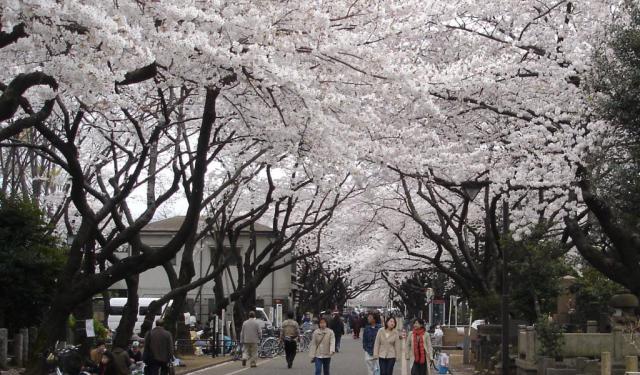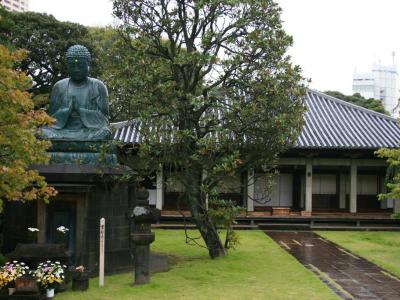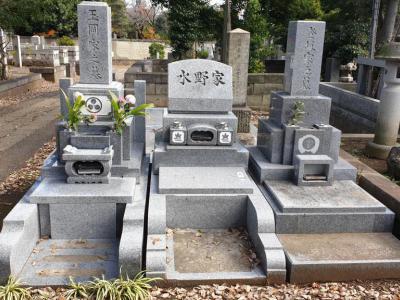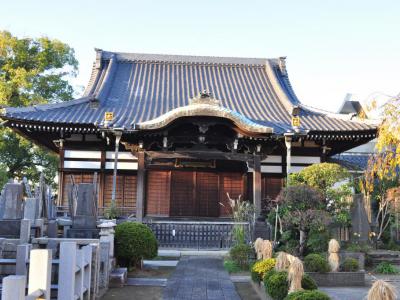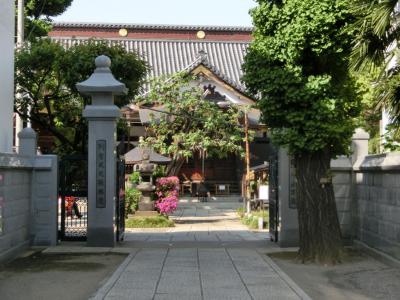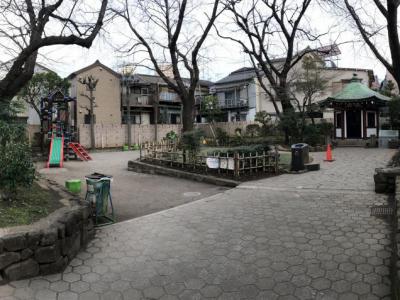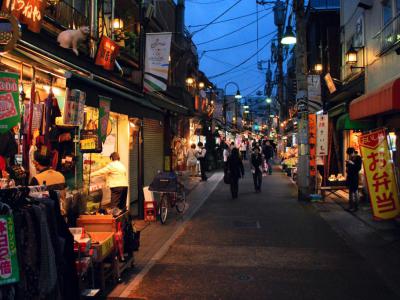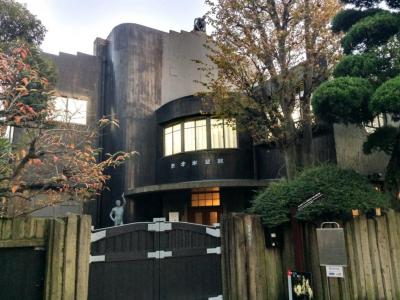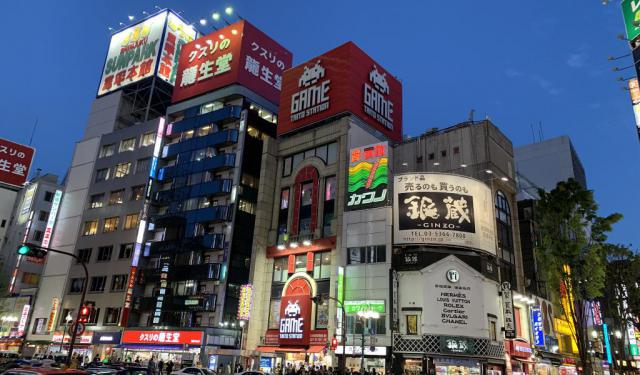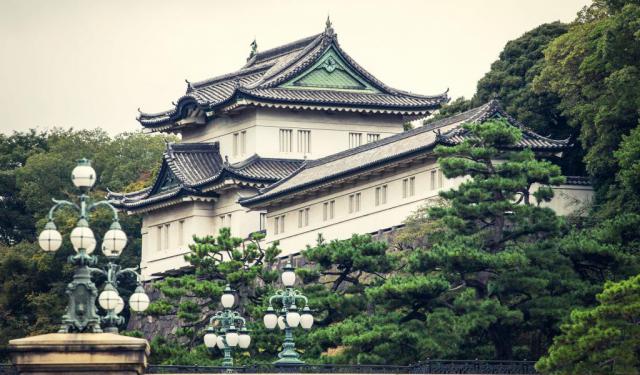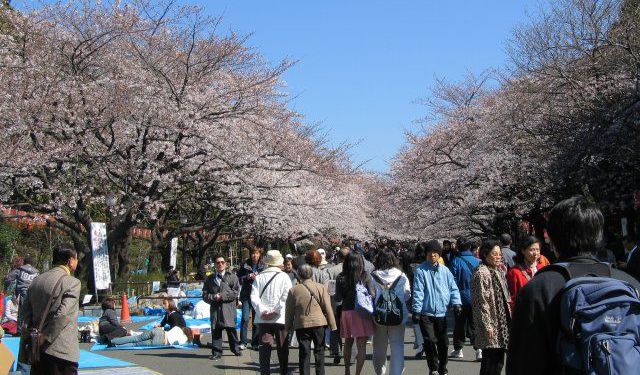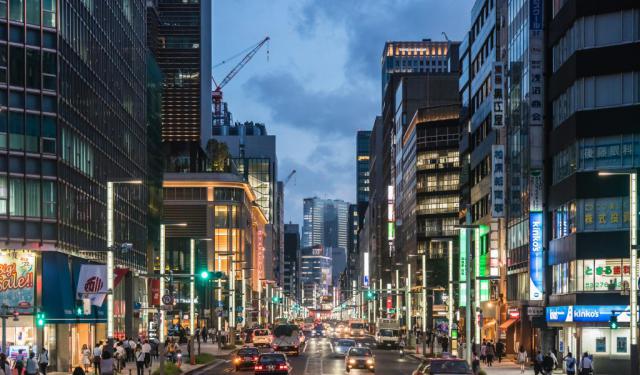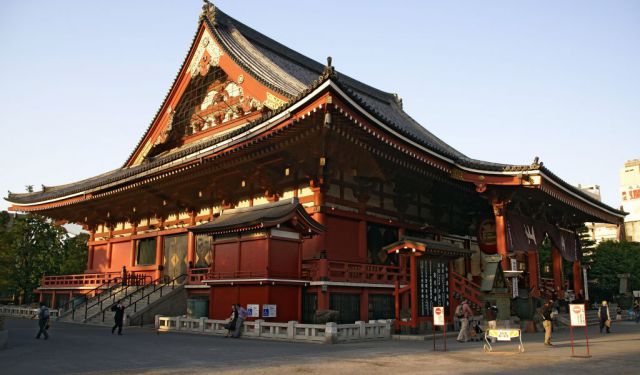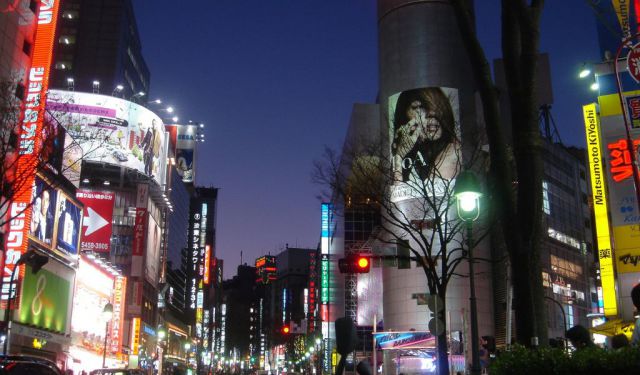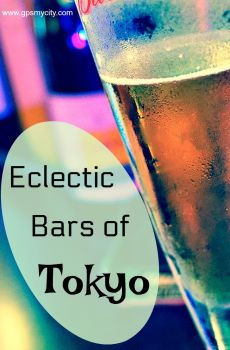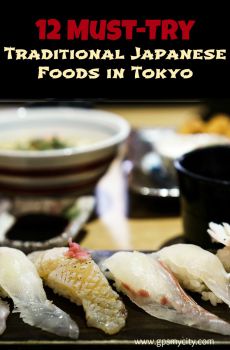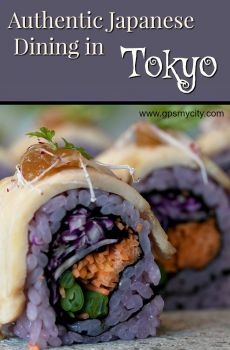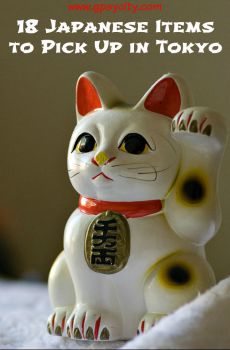Yanaka Walking Tour (Self Guided), Tokyo
A bit away from Downtown Tokyo, Yanaka is a hidden spot with a lot to offer. This neighborhood is known for its narrow alleys, traditional wooden houses, izakaya pubs, and old-style shops. Having largely escaped the damage of World War II, Yanaka exudes the last-century charm of Tokyo's old town ambiance.
With a high concentration of ancient places of worship in the district, the air here is filled with serene nostalgia. One of the prominent local landmarks is the Tennoji Buddhist Temple dating back to the Edo period, renowned for its bronze Buddha statue. Also notable are the Kannonji Temple with its unique Tsukiji wall, and the Daienji Temple originally built as far back as the mid-1500s.
Another top attraction in the area is Yanaka Cemetery, a peaceful resting place for many historical individuals, found near the Tennoji Temple. The main path through the cemetery is well-kept and pleasant to stroll, especially with cherry blossoms in spring or colorful foliage in autumn.
Okakura Tenshin Memorial Park is a hidden gem that pays tribute to the influential art critic Okakura Tenshin. This park is a peaceful retreat for visitors seeking tranquility.
Having visited the memorial, you may want to stop by Yanaka Ginza, a traditional shopping street lined with small stores and stalls selling local snacks, crafts, and souvenirs. Make sure to try the local food, as the prices here tend to be much lower than in the city center.
Lastly, the Asakura Museum of Sculpture showcases the works of the renowned Japanese sculptor Fumio Asakura. The museum's collection includes intricate sculptures and a beautiful garden.
Visiting Yanaka is like stepping back in time into the historical side of Tokyo. If your idea of fun implies exploring ancient sites, strolling through serene gardens, or shopping for local crafts, Yanaka is your place. So, make sure to include it in your Tokyo itinerary for a memorable and enriching experience.
With a high concentration of ancient places of worship in the district, the air here is filled with serene nostalgia. One of the prominent local landmarks is the Tennoji Buddhist Temple dating back to the Edo period, renowned for its bronze Buddha statue. Also notable are the Kannonji Temple with its unique Tsukiji wall, and the Daienji Temple originally built as far back as the mid-1500s.
Another top attraction in the area is Yanaka Cemetery, a peaceful resting place for many historical individuals, found near the Tennoji Temple. The main path through the cemetery is well-kept and pleasant to stroll, especially with cherry blossoms in spring or colorful foliage in autumn.
Okakura Tenshin Memorial Park is a hidden gem that pays tribute to the influential art critic Okakura Tenshin. This park is a peaceful retreat for visitors seeking tranquility.
Having visited the memorial, you may want to stop by Yanaka Ginza, a traditional shopping street lined with small stores and stalls selling local snacks, crafts, and souvenirs. Make sure to try the local food, as the prices here tend to be much lower than in the city center.
Lastly, the Asakura Museum of Sculpture showcases the works of the renowned Japanese sculptor Fumio Asakura. The museum's collection includes intricate sculptures and a beautiful garden.
Visiting Yanaka is like stepping back in time into the historical side of Tokyo. If your idea of fun implies exploring ancient sites, strolling through serene gardens, or shopping for local crafts, Yanaka is your place. So, make sure to include it in your Tokyo itinerary for a memorable and enriching experience.
How it works: Download the app "GPSmyCity: Walks in 1K+ Cities" from Apple App Store or Google Play Store to your mobile phone or tablet. The app turns your mobile device into a personal tour guide and its built-in GPS navigation functions guide you from one tour stop to next. The app works offline, so no data plan is needed when traveling abroad.
Yanaka Walking Tour Map
Guide Name: Yanaka Walking Tour
Guide Location: Japan » Tokyo (See other walking tours in Tokyo)
Guide Type: Self-guided Walking Tour (Sightseeing)
# of Attractions: 7
Tour Duration: 1 Hour(s)
Travel Distance: 1.6 Km or 1 Miles
Author: DanaOffice
Sight(s) Featured in This Guide:
Guide Location: Japan » Tokyo (See other walking tours in Tokyo)
Guide Type: Self-guided Walking Tour (Sightseeing)
# of Attractions: 7
Tour Duration: 1 Hour(s)
Travel Distance: 1.6 Km or 1 Miles
Author: DanaOffice
Sight(s) Featured in This Guide:
- Tennoji Temple
- Yanaka Cemetery
- Kannonji Temple
- Daienji Temple
- Okakura Tenshin Memorial Park
- Yanaka Ginza
- Asakura Museum of Sculpture
1) Tennoji Temple
Tennoji Temple is a centuries-old Buddhist temple that is known around the world for its bronze Buddha statue. It is located at the forefront of the Yanaka Cemetery, a former Buddhist cemetery that was converted to a public space with the Meiji government.
The temple was built in 1274 by Nichiren. The Buddha statue, known locally as Tennoji Daibutsu, was crafted in 1690 by Ota Kyuemon. Tennoji Temple is also home to one of the Seven Lucky Gods, Bishamuonten. He is the protectorate of the righteous and the patron of warriors.
A five-story pagoda once stood near the temple, but was destroyed in 1957 as part of a suicide pact between a married man and his much younger lover.
Now facing Nippori Station, Tennoji Temple offers a respite of solitude from the busy and vibrant Tokyo streets. Visitors can walk through the cemetery and around the grounds as part of their walking tour of the area. The temple is free for all guests.
The temple was built in 1274 by Nichiren. The Buddha statue, known locally as Tennoji Daibutsu, was crafted in 1690 by Ota Kyuemon. Tennoji Temple is also home to one of the Seven Lucky Gods, Bishamuonten. He is the protectorate of the righteous and the patron of warriors.
A five-story pagoda once stood near the temple, but was destroyed in 1957 as part of a suicide pact between a married man and his much younger lover.
Now facing Nippori Station, Tennoji Temple offers a respite of solitude from the busy and vibrant Tokyo streets. Visitors can walk through the cemetery and around the grounds as part of their walking tour of the area. The temple is free for all guests.
2) Yanaka Cemetery
Yanaka Cemetery was once a Buddhist cemetery. This is evidenced by the Buddhist temple, Tennoji, and its large, bronze statue of the Buddha. During the Meiji Restoration, which began in the 1860s, the cemetery was transferred into a public one so that Shinto funerals and burials could take place.
Yanaka Cemetery encompasses more than 1,000 square meters and has about 7,000 graves. Also located on the cemetery grounds are the ruins of a 20th century, five-story pagoda and a large number of cherry trees that line the walkways. The blossoming trees make the cemetery a popular tourist location in late-March and April of each year.
Notable burials at Yanaka Cemetery include last shogun of Japan, Tokugawa Yoshinobu; former prime minister Ichirō Hatoyama; Momoko Kōchi, a popular actress and author Ichiyō Higuchi.
The cemetery is open to guests 24-hours per day. However, the cemetery is not well-lit at night and may be best viewed during daylight hours.
Yanaka Cemetery encompasses more than 1,000 square meters and has about 7,000 graves. Also located on the cemetery grounds are the ruins of a 20th century, five-story pagoda and a large number of cherry trees that line the walkways. The blossoming trees make the cemetery a popular tourist location in late-March and April of each year.
Notable burials at Yanaka Cemetery include last shogun of Japan, Tokugawa Yoshinobu; former prime minister Ichirō Hatoyama; Momoko Kōchi, a popular actress and author Ichiyō Higuchi.
The cemetery is open to guests 24-hours per day. However, the cemetery is not well-lit at night and may be best viewed during daylight hours.
3) Kannonji Temple
Kannonji Temple is tucked away in the streets of Tokyo. The Shingon Buddhist temple was established in 1648. Along with the temple, tourists will find a graveyard, a small Buddha statue and a memorial to the 47 ronin.
Visitors may be aware of the Kannonji Temple due to the story of the ronin. Also known as the Ako incident, the 47 ronin story has been retold in terms of plays, opera, art, literature and film. The ronin met at the Kannonji Temple to develop the plot to avenge the death of their master.
The temple is surrounded by buildings and walls. One of these walls is the tsuji-bei wall, which was originally from the Edo period. This protected cultural property is one of the few remaining walls of the city that was once divided by similar structures. The often-photographed wall is unique in style due to the stacking of mud and tiles to create a strong, time-tested form.
Visitors may be aware of the Kannonji Temple due to the story of the ronin. Also known as the Ako incident, the 47 ronin story has been retold in terms of plays, opera, art, literature and film. The ronin met at the Kannonji Temple to develop the plot to avenge the death of their master.
The temple is surrounded by buildings and walls. One of these walls is the tsuji-bei wall, which was originally from the Edo period. This protected cultural property is one of the few remaining walls of the city that was once divided by similar structures. The often-photographed wall is unique in style due to the stacking of mud and tiles to create a strong, time-tested form.
4) Daienji Temple
One of the most photographed temples in Tokyo is Daienji Temple. This Tendai Buddhist temple is known for its many statues. It is also known for honoring Daikokuten, the God of Wealth.
The seven statues near the entrance to the temple grounds are those of the Seven Lucky Gods. There are also statues to commemorate the 500 disciples of Buddha. These statues, which are visible from the street outside of the temple, were created to honor victims of a 1772 Tokyo fire that is thought to have begun at this temple.
In addition to these statues, there are numerous figures like the Yakushi Nyorai, the Buddha of Healing. It has the appearance of being encased in gold due to the act of placing gold leaves on the body, which is a common practice among visitors.
The Daienji Temple is open daily from 8 AM through 5 PM. It is accessible from Shimomeguro in Meguro.
The seven statues near the entrance to the temple grounds are those of the Seven Lucky Gods. There are also statues to commemorate the 500 disciples of Buddha. These statues, which are visible from the street outside of the temple, were created to honor victims of a 1772 Tokyo fire that is thought to have begun at this temple.
In addition to these statues, there are numerous figures like the Yakushi Nyorai, the Buddha of Healing. It has the appearance of being encased in gold due to the act of placing gold leaves on the body, which is a common practice among visitors.
The Daienji Temple is open daily from 8 AM through 5 PM. It is accessible from Shimomeguro in Meguro.
5) Okakura Tenshin Memorial Park
Okakura Tenshin was a pioneer in the modern art of Japan. Known widely outside of Japan for his work, "The Book of Tea," Tenshin was instrumental both in developing modern art styles and preserving traditional Japanese techniques.
Tenshin was curator of the Department of Chinese and Japanese Art at the Museum of Fine Arts in Boston. He was also one of the founders of the Tokyo School of Fine Arts and the principal founder of the Japan Art Institute. The former site of the latter is now the location of Okakura Tenshin Memorial Park.
This small park contains a hexagonal building that houses a statue of Tenshin, which was designed by sculptor and artist Hiragushi Denchu from a cast that was created in 1931.
The park was established by Taito City. It was opened in 1967. Okakura Tenshin Memorial Park is open 24 hours. It is free to enter and pay respects to the artist. For those on walking tours of Yanaka, they may note that the park has a public restroom as well.
Tenshin was curator of the Department of Chinese and Japanese Art at the Museum of Fine Arts in Boston. He was also one of the founders of the Tokyo School of Fine Arts and the principal founder of the Japan Art Institute. The former site of the latter is now the location of Okakura Tenshin Memorial Park.
This small park contains a hexagonal building that houses a statue of Tenshin, which was designed by sculptor and artist Hiragushi Denchu from a cast that was created in 1931.
The park was established by Taito City. It was opened in 1967. Okakura Tenshin Memorial Park is open 24 hours. It is free to enter and pay respects to the artist. For those on walking tours of Yanaka, they may note that the park has a public restroom as well.
6) Yanaka Ginza
Visitors to Tokyo can take a step back in time when they walk through Yanaka Ginza. This street in the Yanaka neighborhood of east Tokyo offers traditional dining and shopping. Unlike some of the other shopping avenues in the city, it is as popular with locals as it is with tourists.
Shoppers can find everything from umbrellas to fresh fish for sale in the open air of this shopping street. Tourists can grab a bite to eat or shop for souvenirs without paying the high prices found in many other spots in the city.
The food offerings on Yanaka Ginza are mostly local fare. Street foods are common, as are small cups of sake. However, tourists should remember to keep local customs in mind. It is considered rude to eat or drink while walking down the street. Tourists should find a quiet place to enjoy the food before continuing on their way.
Shoppers can find everything from umbrellas to fresh fish for sale in the open air of this shopping street. Tourists can grab a bite to eat or shop for souvenirs without paying the high prices found in many other spots in the city.
The food offerings on Yanaka Ginza are mostly local fare. Street foods are common, as are small cups of sake. However, tourists should remember to keep local customs in mind. It is considered rude to eat or drink while walking down the street. Tourists should find a quiet place to enjoy the food before continuing on their way.
7) Asakura Museum of Sculpture
The Asakura Museum of Sculpture is a museum that honors sculptor Fumio Asakura. It was opened in Tokyo by his family in 1967, two years after Asakura's death.
The museum is housed in Asakura's home, school and studio. The building is made from reinforced concrete and glass. The roof of the museum is home to the city's oldest, continually tended roof garden. Asakura used this garden to teach horticulture to his pupils so that they could have a better understanding of nature.
The permanent exhibition at the Asakura Museum of Sculpture includes sculptures and portraits created by Asakura. The museum also hosts regular events like gallery talks, tours of the gardens and an architectural tour. A calendar of special events can be found on the museum's website.
The museum was named a cultural property by the government in 2001. The rooftop garden and the courtyard have both been registered as national places of scenic beauty.
The museum is housed in Asakura's home, school and studio. The building is made from reinforced concrete and glass. The roof of the museum is home to the city's oldest, continually tended roof garden. Asakura used this garden to teach horticulture to his pupils so that they could have a better understanding of nature.
The permanent exhibition at the Asakura Museum of Sculpture includes sculptures and portraits created by Asakura. The museum also hosts regular events like gallery talks, tours of the gardens and an architectural tour. A calendar of special events can be found on the museum's website.
The museum was named a cultural property by the government in 2001. The rooftop garden and the courtyard have both been registered as national places of scenic beauty.
Walking Tours in Tokyo, Japan
Create Your Own Walk in Tokyo
Creating your own self-guided walk in Tokyo is easy and fun. Choose the city attractions that you want to see and a walk route map will be created just for you. You can even set your hotel as the start point of the walk.
Shinjuku Walking Tour
Known as the best entertainment district in Tokyo, Shinjuku abounds in venues where visitors can play, eat, and shop to their hearts' content all day long. Besides the endless list of fun, shopping, and dining options available, the district also offers some truly amazing sightseeing opportunities which are often underrated.
One of its iconic landmarks is the two towers of the... view more
Tour Duration: 1 Hour(s)
Travel Distance: 2.1 Km or 1.3 Miles
One of its iconic landmarks is the two towers of the... view more
Tour Duration: 1 Hour(s)
Travel Distance: 2.1 Km or 1.3 Miles
Tokyo Imperial Palace Walking Tour
Welcome to Tokyo’s greenest royal secret-The Imperial Palace-a majestic sprawl of tradition, tranquility, and top-tier landscaping. This is where Japan’s Emperor hangs his crown (figuratively speaking), nestled right in the city’s beating heart and surrounded by moats like something straight out of a storybook... or a really classy samurai movie.
Now, before you grab your crown and march... view more
Tour Duration: 2 Hour(s)
Travel Distance: 2.7 Km or 1.7 Miles
Now, before you grab your crown and march... view more
Tour Duration: 2 Hour(s)
Travel Distance: 2.7 Km or 1.7 Miles
Ueno Park Walking Tour
Ueno Park is Tokyo’s ultimate mashup of history, nature, and culture! It started as part of the powerful Kanei-ji Temple during the Edo period, which lasted from 1603 to 1868. Back then, samurais roamed and shoguns ruled the country. In the 1870s, as Japan embraced modernization, the area was gentrified, turning into a public park. Today, it's a major attraction for travelers craving both a... view more
Tour Duration: 2 Hour(s)
Travel Distance: 3.9 Km or 2.4 Miles
Tour Duration: 2 Hour(s)
Travel Distance: 3.9 Km or 2.4 Miles
Ginza Shopping Tour
Often compared with New York's Fifth Avenue, Ginza is the most luxurious shopping district in Tokyo. Its two main avenues running through the area, Chuo-dori Street and Harumi-dori Street, are lined with high-end boutiques, enormous department stores, and flagship stores of renowned international brands carrying a wealth of merchandise, from fashion and jewelry to electronics and cosmetics.
... view more
Tour Duration: 1 Hour(s)
Travel Distance: 1.6 Km or 1 Miles
... view more
Tour Duration: 1 Hour(s)
Travel Distance: 1.6 Km or 1 Miles
Asakusa District Walking Tour
Asakusa - Tokyo’s delightful time machine with a modern metro stop. This is one of the rare areas in the city where you will find narrow alleys, traditional shops, temple markets, and geisha whispers still echoing off the rooftops. Think of it as Old Tokyo in HD.
Back in the Edo period (between 1603 and 1868), Asakusa got its groove thanks to some very rich guys - the rice storehouse keepers... view more
Tour Duration: 1 Hour(s)
Travel Distance: 1.1 Km or 0.7 Miles
Back in the Edo period (between 1603 and 1868), Asakusa got its groove thanks to some very rich guys - the rice storehouse keepers... view more
Tour Duration: 1 Hour(s)
Travel Distance: 1.1 Km or 0.7 Miles
Shibuya Walking Tour
Ah, Shibuya... If Tokyo were a giant party, this district would be the dance floor. A neon-lit playground where fashion-forward teens, pop culture fiends, and wide-eyed tourists collide in a kaleidoscope of color, style, and pure urban energy.
But before it became Japan’s trendsetting capital, Shibuya had a different kind of ruling class-the Shibuya clan. Back in the 1160s, they ran this... view more
Tour Duration: 2 Hour(s)
Travel Distance: 3.9 Km or 2.4 Miles
But before it became Japan’s trendsetting capital, Shibuya had a different kind of ruling class-the Shibuya clan. Back in the 1160s, they ran this... view more
Tour Duration: 2 Hour(s)
Travel Distance: 3.9 Km or 2.4 Miles
Useful Travel Guides for Planning Your Trip
Eclectic Bars of Tokyo
Time to tap glasses and share laughs in Tokyo, a city of wondrous variety! In this app is an insider's guide to attractive drinking bars, and places nearby that are worthy experiences (theatres, shrines, shopping districts, etc).
Each bar has been carefully chosen throughout this endless...
12 Must-Try Traditional Japanese Foods in Tokyo
Cuisine is an integral part of any local culture, and no trip to Tokyo is complete without tasting the authentic, Tokyo-made Japanese food. This directory offers information about the traditional dishes and drinks available in Tokyo to help visitors better understand the local food culture and make...
Authentic Japanese Dining in Tokyo
Tokyo is home to literally a million eating places, so finding a truly authentic Japanese style restaurant with an English language menu can be rather tricky. We have compiled a list of easy to find Japanese style restaurants covering a range of culinary specialties to make your taste-buds tingle...
Tokyo Souvenirs: 18 Authentic Japanese Products to Buy in Tokyo
The list of the delights of Tokyo is long and being exposed to just some of them, at some point, can make one addicted (just as the Charles Winchester III character from the M.A.S.H. series). Still, you can always "prolong" the experience and enjoy the effects of it more, if bring home...
The Most Popular Cities
/ view all
